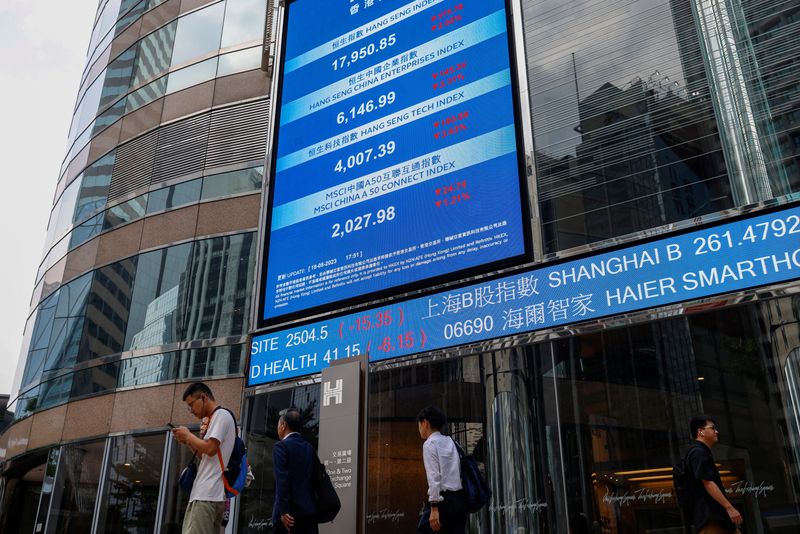By Wayne Cole
SYDNEY (Reuters) -Asian markets faced more turmoil on Monday as fears of a global trade war saw Wall Street futures plunge, while investors wagered the mounting risk of recession could see U.S. rates cut as early as May.
S&P 500 futures slid 4.79% in volatile trade, while Nasdaq futures dived 5.78%, adding to last week’s almost $6 trillion in market losses. [.N]
Nikkei futures slid 3.9% to 31,105, pointing to a drop of up to 3,000 points for the cash index that closed at 33,780 on Friday.
The gloomier outlook for global growth kept oil prices under heavy pressure, following steep losses last week. [O/R]
Brent fell $2.12 to $63.46 a barrel, while U.S. crude dived $2.05 to $59.94 per barrel.
The carnage came as White House officials showed no sign of backing away from their tariff plans, and China declared the markets had spoken on their retaliation through levies on U.S. goods.
President Donald Trump told reporters that markets would have to take their medicine and he would not do a deal with China until the U.S. trade deficit was sorted out.
The flight to safe havens saw Treasury futures surge a full point, a very rare move for Asian trade, while Fed fund futures jumped to price in an extra quarter-point rate cut from the Federal Reserve this year.
Markets swung to imply around a 70% chance the Fed could cut as soon as May, even though Chair Jerome Powell on Friday said the central bank was in no hurry on rates.
That dovish turn saw the dollar slip another 1% on the safe-haven Japanese yen to 145.38 yen, while the euro held firm at $1.0987.
“The size and disruptive impact of U.S. trade policies, if sustained, would be sufficient to tip a still healthy U.S. and global expansion into recession,” said Bruce Kasman, head of economics at JPMorgan, putting the risk of a downturn at 60%.
“We continue to expect a first Fed easing in June,” he added. “However, we now think the Committee cuts at every meeting through January, bringing the top of the funds rate target range down to 3.0%.”
NEVER MIND INFLATION
Investors were also wagering the imminent threat of recession would outweigh the likely upward shove to inflation from tariffs.
U.S. consumer price figures out later this week are expected to show another rise of 0.3% for March, but analysts assume it is just a matter of time before tariffs push prices sharply higher, for everything from food to cars.
Rising costs will also put pressure on company profit margins, just as the earnings season gets underway with some of the big banks due on Friday. Around 87% of U.S. companies will report between April 11 and May 9.




